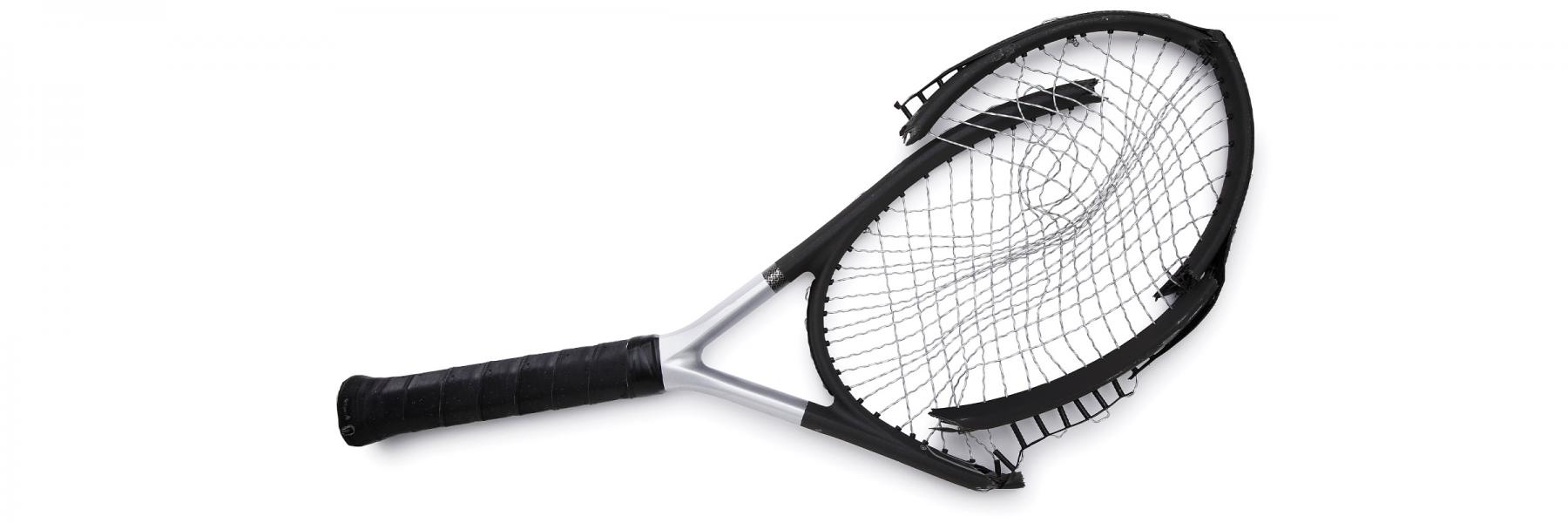
I fractured my wrist in January while playing tennis. Though the pro with whom I was having a lesson was certainly distracting enough to be the cause, the fact is I was moving quickly to my right to pick up a forehand and tripped over my own feet. I rolled my right ankle and went down hard, my left hand reflexively deployed to break my fall. The racquet went flying, and I involuntarily issued a declaration of pain.
I popped up quickly and was walking off the rolled ankle. The wrist, I could feel, was not going to resolve itself as quickly. Nonetheless, wanting to appear tough and resilient to the hot, young pro, I said I would be okay, took a couple of ibuprofen, and finished the lesson—now focused entirely on my forehand so I did not need to use my left arm.
The wrist swelled up by the time the lesson finished, so I took more ibuprofen and iced it over the next 24 hours. Within a couple of days the swelling was down, and I thought it was just a bad sprain. But because it still wasn’t feeling great a week later—and I wanted to get back on the tennis court—I went to see my primary care doctor. He ordered an x-ray and, sure enough, it was “an impaction fracture of the distal radius.”
Shortly after it was diagnosed as a fracture, a friend—who knows my status but knows nothing about HIV medicine—asked if any of the medications I took affected my bone density. Duh! Of course I do—why hadn’t I thought about that? It has long been known that one side effect of tenofovir disoproxil fumarate (TDF) is reduced bone density. I took some form of TDF—first as Viread, then as a component of Atripla—for about 12 years. And about seven years after I started taking it, I broke a finger playing volleyball (apparently, while I like to play sports I am not very coordinated). This new wrist fracture has certainly given me reason to wonder whether TDF has reduced my bone density and made me more prone to fractures.
Even if I discover that my bone density has been reduced and may be a contributing factor to these fractures, I don’t have regrets about utilizing these medications to treat my HIV.
Even if I discover that my bone density has been reduced and may be a contributing factor to these fractures, I don’t have regrets about utilizing these medications to treat my HIV. All of the medications available at the time had side effects, and I am sure I was made aware that reduced bone density was one possible side effect from TDF. I needed medication to keep my HIV suppressed, and this was the choice my doctor and I made given the relative merits of the available options.
However, we now know that in 2004 Gilead shelved development of a version of tenofovir—tenofovir alafenamide fumarate (TAF)—that was effective at much lower doses and, therefore, had reduced side effects in terms of kidney function and bone loss. Years later, Gilead put TAF back into the development process, and it was approved by the FDA in 2015. It is now used in a variety of HIV medications, including the second approved version of PrEP (Descovy). In fact, the only real difference between Truvada and Descovy is the replacement of TDF with TAF, at a much lower dosage. In order to gain FDA approval for TAF, Gilead greatly touted the reduced effects on kidney function and bone loss.
This is the point at which all of this became a legal issue. You’ve probably seen the ads from personal injury firms seeking participants in the class actions against Gilead based on its conduct with respect to TDF and TAF. Those lawsuits allege that Gilead postponed development of TAF—a drug it knew would likely have reduced effects on kidney function and bone loss—in order to maximize its profits on TDF, which would be considered an inferior drug once TAF was approved. By delaying development and approval of TAF, the lawsuits allege, Gilead profited from TDF until its patent was about to run out and then replaced it with the new drug, for which the patent period was just beginning. In other words, just as Truvada was about to become available for manufacture in a generic form, Descovy—a safer version of PrEP that would be sold at non-generic prices—was approved. (Similarly, TAF replaced TDF in the HIV treatment drug Stribild, giving us Genvoya in November 2015.) Gilead appears poised to reap the profits from TAF for many years to come.
I am not an antitrust or patent lawyer (these are the areas of law at issue in the TDF/TAF lawsuits against Gilead), but these claims seem relatively solid to me. I will be interested to see whether Gilead’s claims that it temporarily shelved TAF for other reasons hold up in court. If they do not, an appropriate remedy would be for Gilead to cough up all TDF profits from the point at which TAF could have been approved (if Gilead had kept it in development) until it actually was approved. Some of that money could go to compensate people who took TDF and suffered adverse consequences, such as reduced kidney function or bone loss. Another portion of the money could go to provide free or low-cost Descovy to people who need it and can’t afford it.
The jury is still out on whether that first category of potential recipients includes me—I haven’t even had a bone density test yet—but Gilead should not profit from any intentional delay in developing a safer, more effective drug. That won’t heal my fractured wrist, but it would feel like justice served.
Scott Schoettes is an attorney and advocate who lives openly with HIV. He engages in impact litigation, public policy work, and education to protect, enhance, and advance the rights of everyone living with HIV.


